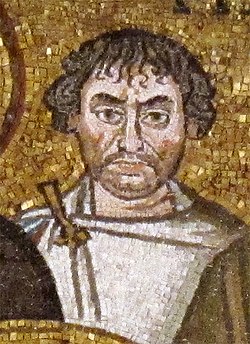| Siege of Ariminum | |||||||||
|---|---|---|---|---|---|---|---|---|---|
| Part of the Gothic War (535–554) | |||||||||
 First phase of Gothic War campaigns | |||||||||
| |||||||||
| Belligerents | |||||||||
| | | ||||||||
| Commanders and leaders | |||||||||
| Vitiges | |||||||||
| Strength | |||||||||
| Smaller force | Larger force | ||||||||
| Casualties and losses | |||||||||
| Light | Light | ||||||||
The siege of Ariminum (Italian : Assedio di Ariminum, present-day Rimini), also known as the siege of Rimini (Assedio di Rimini), was an encounter in 538 AD during the Gothic War, where the Byzantine forces broke the siege by the Ostrogoths (Goths).
Contents
- Prelude
- Capture of Ariminum
- John's insubordination
- Army movements and engagements
- Siege
- Belisarius deception
- Aftermath
- Scholarly assessment
- See also
- References
- Sources
- Primary
- Secondary
- Further reading
- External Links
In March 538, Byzantine commander John captured Ariminum, which was near the Gothic capital in Ravenna, to entice the Goths into lifting the siege of Rome. Byzantine General Belisarius sent reinforcements to Ariminum and ordered John to leave the city. However, John refused to obey and stayed in the city. In the meantime, fearing for their capital, the Goths retreated from Rome and moved to besiege Ariminum. They were unsuccessful in taking Ariminum by force, and instead, the leader of the Gothic forces, Vitiges, decided to starve the town.
Initially, the Byzantine leadership was divided over whether John should be rescued despite his insubordination. Belisarius ultimately chose to save him after an appeal from General Narses. Belisarius wanted to avoid direct battle engagement because the Goths outnumbered the Byzantine forces. He split his army into smaller groups and sent them to Ariminum by land and sea. The near-simultaneous arrival of Byzantine forces from multiple directions created the impression of a much larger army, unnerving the Goths. As a result, they abandoned the siege on 24 July 538 and withdrew to Ravenna. Despite the victory, disagreements over John's insubordination fractured the unity of the Byzantine leadership.




